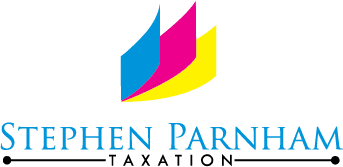Inheritance tax (IHT) has been around for more than 300 years. In its current form, it replaced the old Capital Transfer Tax, which had been developed with a philosophical basis – to protect the poor by deliberately redistributing inherited wealth through taxation.
This January, Chancellor described the current IHT regime as “particularly complex” and asked the Office for Tax Simplification (OTS) to review it. In a letter to the OTS, he wrote: “I would be most interested to hear any proposals you may have for simplification, to ensure that the system is fit for purpose and makes the experience of those who interact with it as smooth as possible.”
The OTS review will focus primarily on technical and administrative issues – processes for submitting returns, paying IHT, estate planning and disclosure. Hammond also suggested it should examine the potential distorting effect of gifts on decisions relating to transfers and investments.
IHT also caught the attention of George Osborne when he was Chancellor and, in July 2015, he announced significant changes to the regime. If you owned a property worth up to £1m you would eventually be able to leave it to your children or grandchildren completely free of IHT. The Residence Nil Rate Band Allowance (RNRB) would raise the IHT threshold, which was introduced in stages from April 2017 onwards for individuals who satisfy the criteria.
In the current tax year, the RNRB provides an additional IHT allowance of £125,000. This will increase by £25,000 in the next two tax years so that, by 2020/21, the RNRB will be £175,000. Without RNRB, the 2018/19 tax-free IHT allowance remains at £325,000 – the same figure as eight years ago, with no current plans to increase it.
The IHT rate is also unaltered – 40% for anything above the £325,000 threshold (although this in itself is adjusted to 36% when 10% or more of an estate passes to charity – another illustration of the complexity of IHT).
For those who qualify, however, IHT allowances will total £500,000 – a figure that doubles for married couples, producing £1m in combined allowances. Some tax experts have requested the government to reconsider these allowances in its simplification strategy.
IHT simplification is certainly feasible – although it is unclear whether the Treasury has the necessary will. On 26 April, the OTS announced it would “identify simplification opportunities” and published a call for evidence as well as an online survey seeking feedback from those who have used the system.
Less than 5% of estates are liable to IHT, yet more money is being raised by it. Total HM Revenue & Customs receipts from IHT stood at £4.84bn in 2016/17 – more than double the £2.4bn raised in 2009/10. House price inflation in London and the South East is the primary cause – prices have risen by more than 60% in the last eight years.
Several of the more complex aspects of IHT legislation will undoubtedly be reviewed – the taxation of trusts, exemptions and reliefs including business property and agricultural property reliefs, together with the RNRB allowance.
If adopted, the OTS report proposals could have a significant effect. Recommended changes might jeopardise IHT planning arrangements. The use of business property relief (BPR) assets in IHT planning is noteworthy. Clients are frequently recommended by their tax advisers to hold some of their estates in assets that qualify for BPR after two years. After this qualifying period, they can remove these assets from the tax net.
This was never its intended purpose, however. Instead, BPR was conceived to enable business owners to pass on their businesses without any IHT impact. The OTS survey asks questions about this issue.
The review will also examine pensions, which have become very tax-efficient since the pension freedom legislation, passing outside the dutiable estate on death. In widening the IHT net, the review seems likely to make them a potential target.
Other unintended consequences of updating current IHT legislation may include trusts that are routinely used for non-tax planning reasons. Presently, there are hindrances – particularly since the introduction of the RNRB in creating trusts on death. These trusts are appropriate in providing for profligate beneficiaries or protecting an estate after a second marriage.
Simplification may lead to replacement. Continued speculation surrounds the introduction of an annual property tax or a general wealth tax. But such reforms could prove to be politically unpopular, which make them unlikely under the present government.
By contrast, a future Labour government is more likely to make drastic tax changes. At last year’s general election, the party announced plans to scrap the double relief IHT threshold for spouses on property. Some commentators believe they could also reduce the IHT threshold to around £300,000.
There is, of course, the distinct possibility the OTS report might never be implemented. Previous proposals have simply been ignored by the government of the day. Will Hammond be bold in his IHT reforms and what consequences will follow for future investment decisions?
The report will make really interesting reading for both advisers and taxpayers and their planning strategies.
Stay tuned !!!.


